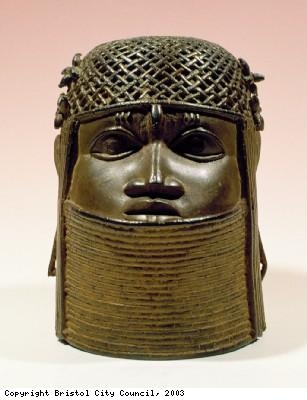How Slavery Developed
African heritage
Africa has a long and extremely diverse cultural heritage. Many different cultures had developed, each with its own form of social and political organisation.
There were great rulers like the King or Oba of Benin, who ruled over large areas and many people. There were also small communities which were ‘ruled’ by village elders. Over time sophisticated trade networks and currency systems developed allowing goods to be exchanged across the continent. The people of West Africa traded northwards across the Sahara desert. They exchanged salt, gold, ivory and cloth for horses. The trade also included slaves, taken to North Africa and southern Spain as household servants.
West African craftspeople, especially from the Edo people (of Benin) and the Asante people, were highly skilled in casting metals. Each king of Benin, called an oba, had a shrine made when he died. Heads made from brass, ivory tusks and other metal and wood objects were placed on the shrine in his memory. Brass and gold objects were made by a process called ‘lost wax’. A model was made in beeswax and coated in clay The clay was heated and the melted wax poured out of the mould. The heated liquid metal was poured into the space where the wax had been. When it cooled the clay could be cracked and pulled off. Each item made by this method was unique.

 Bristol’s merchants
Bristol’s merchants Examples of cargoes
Examples of cargoes Abolition
Abolition Rebellion
Rebellion Sugar Plantations
Sugar Plantations African heritage
African heritage The voyage
The voyage ‘Buying’ the slaves
‘Buying’ the slaves Bristol ships go to Africa
Bristol ships go to Africa Goods to trade
Goods to trade

